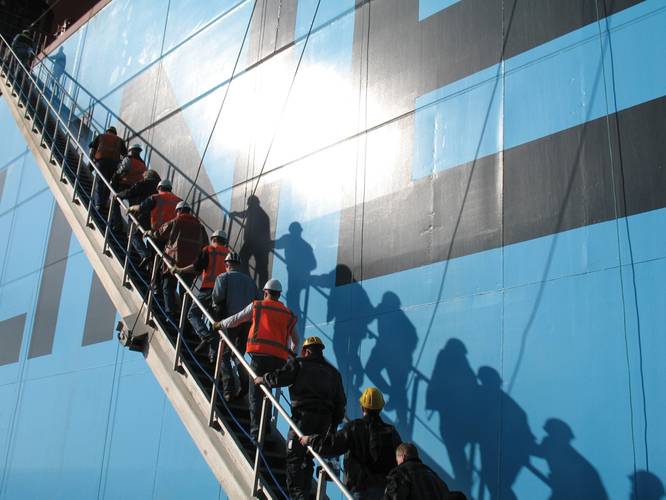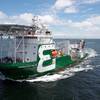Maritime Labor Convention 2006 and the U.S.
The Maritime Labor Convention 2006, sponsored by the International Labor Organization (ILO) and better known as MLC 2006, will enter into force on August 20, 2013. It has been ratified by 35 nations as of the date of the preparation of this article, including Australia, Canada, Denmark, Greece, Panama, Singapore and Spain. The United States has not ratified MLC 2006, and it is unclear whether it ever will – not so much as of objection to its various provisions, but more due to sheer inertia.
MLC 2006 consolidates most of the existing ILO maritime labor conventions into one coordinated document. It establishes minimum standards for such things as conditions of employment, hours of work and rest, accommodations, recreational facilities, food and catering, health protection, medical care, welfare, and social security protection.
With limited exceptions, MLC 2006 will apply to commercial vessels of a Member State, and each Member State may enforce the requirements to the Convention with regard to covered commercial vessels of other Members States that operate within its waters. Member States are obligated to implement the Convention “in such a way as to ensure that the ships that fly the flag of any State that has not ratified this Convention do not receive more favorable treatment than the ships that fly the flag of any State that has ratified it.” As a result, US-flag vessels will be subject to port state control inspections for MLC 2006 compliance when calling in the port of a State that is party to the Convention.
In an effort to minimize difficulties that might be experienced by US-flag vessels calling in ports of States that are party to MLC 2006, the US Coast Guard proposes to establish a voluntary inspection program for such vessels so that they may document compliance with the Convention requirements. This will be accomplished by means of the Coast Guard authorizing Recognized Classification Societies (RCSs) to conduct MLC compliance examinations and to issue Statements of Voluntary Compliance (SOVC-MLC) on behalf of the US Coast Guard. The Coast Guard does not intend to conduct such MLC compliance examinations for vessels that are classed and can obtain this examination from their respective RCS. Given the current workload of the Coast Guard and its manning level, it is unlikely that the agency will conduct MLC compliance examinations for any US-flag vessels, referring them instead to RCSs.
Foreign port state control authorities are not obligated to accept an SOVC-MLC as proof of MLC 2006 compliance. Realistically, though, such Statements of Voluntary Compliance are in common usage, by the United States and other flag states, for a number of international conventions. Thus, it is probable that port state control inspections in the ports of MLC 2006 Member States of vessels that possess a valid SOVC-MLC will be conducted as if the vessel were registered with a Member State and possessed the required MLC documents.
A commercial vessel of 500 gross tons (ITC) and above engaging on an international voyage and calling in a port of a State party to MLC 2006 is required to be in compliance with the Convention and to have on board certification that the vessel has undergone examination by its flag state authority or a RCS and found by that authority or RCS to be in compliance with applicable provisions of the Convention. A covered commercial vessel under 500 gross tons (ITC) engaging on an international voyage and calling in a port of a State party to MLC 2006 is required to be in compliance with the Convention, but is not required to have on board any particular certification of such compliance. Certification for these smaller vessels is recommended, though, as it will reduce the likelihood that the vessel will be subjected to a detailed port state control compliance examination.
The US Coast Guard considers waters of the Great Lakes and the Strait of Juan de Fuca to be inland waters. US-flag vessels operating exclusively on inland waters are exempt from MLC 2006. Likewise, US-flag vessels are exempt from MLC 2006 if their only foreign port calls are in the ports of nations that are not party to MLC 2006. The United States is working with the Government of Canada (which is party to MLC 2006) to develop a Memorandum of Understanding (MOU) that would allow for mutual recognition of each country’s national laws and regulations as providing substantial compliance with the requirements of MLC 2006. If such an MOU is consummated, it would allow vessels of less than 500 gross tons (ITC) operating between ports in Canada and the United States to not undergo port state control inspections for compliance with MLC 2006. Such vessels would not be required to prepare and maintain a declaration of compliance and would not be issued SOVC-MLCs.
For those US-flag vessels not exempted from the requirements of MLC 2006, certain documentation will be required to demonstrate compliance. The SOVC-MLC has been discussed above. Standard A5.1.3.4 of MLC 2006 also requires covered ships to carry and maintain a Declaration of Maritime Labor Compliance (DMLC) stating the national requirements implementing the Convention for the working and living conditions of seafarers and the measures adopted by the shipowner to ensure compliance with the requirements for the ship concerned. Federal law and regulation currently addresses most, but not all, of provisions of MLC 2006 relating to working and living conditions on ships. For those few MLC 2006 provisions not addressed by federal rules (specifically Regulation 4.3 on health and safety and accident prevention and Regulation 5.1.5 regarding on-board complaint procedure), the US Coast Guard policy is to recognize the applicable standards as published in MLC 2006.
The RCS will issue, on behalf of the US Coast Guard, Part I of a Statement of Voluntary Compliance – Declaration of Maritime Labour Compliance (SOVC-DMLC Part I) for qualifying vessels. This document references current US laws and regulations for the relevant mandatory areas of compliance in MLC 2006. That is the easy task.
The more difficult task is with regard to SOVC-DMLC Part II. In accordance with Standard A5.1.3.4., Part II must indicate the measures adopted by the ship owner or operator to ensure compliance with the laws and regulations addressed in Part I. The measures adopted will likely be different for each owner or operator, but must be clearly explained for each portion of Part II. Once prepared by the owner or operator, the RCS will review the measures and, following a successful examination of the ship, will endorse Part II of the SOVC-DMLC.
Once the various SOVCs have been issued or endorsed, they must be posted on the ship in a conspicuous place accessible by the seafarers. The certificates are valid for a period not exceeding five years or until there has been a material change in circumstances.
The US Coast Guard issued a draft Navigation and Vessel Inspection Circular (NVIC) providing guidance on implementation of MLC 2006 by US-flag vessels. It also provides samples of the various MLC certificates. Completion of the work necessary to meet these new requirements may not be easy for some vessel owners and operators as not all management procedures are fully documented at some companies. In addition, the owners and operators must schedule examinations by their RCS in order to obtain the required certificates. Thus, it behooves all concerned to start now in order to meet the pending deadline.
Dennis L. Bryant,
Maritime Regulatroy
Consulting, Gainsville, FL
t: 352-692-5493
e: [email protected]
(As published in the March 2013 edition of Maritime Reporter & Engineering News - www.marinelink.com)














